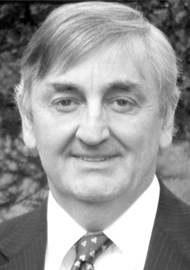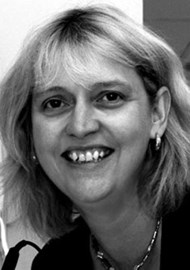Who should get a cochlear implant? Candidacy is one of the most important and widely discussed topics in the field of cochlear implantation. Here, Chris Raine and Debi Vickers outline cochlear implant candidacy in the UK, and compare this with criteria for candidacy around the world.
Cochlear implants (CIs) are considered to be the most successful medical device [1] and have revolutionised the management of patients with severe to profound hearing loss. In the UK Summerfield and Marshall highlighted the clinical efficacy of cochlear implantation which resulted in public funding being provided through the National Health Service, but with variable implementations across the country [2].
The guidelines that were derived following a formal review by the National Institute for Health and Care Excellence (NICE) on clinical and cost effectiveness were welcomed [3]. This supported funding as long as patients met clinical criteria following assessment by a multidisciplinary team. The process ensured individuals received devices that will provide most benefit and that resources are used efficiently. It also helped to give equal access across the UK.
Bilateral simultaneous CIs were recommended for children (≤ 19 years) and unilateral implantation for adults (unless there was an additional sensory impairment) with severe to profound deafness who do not receive adequate benefit from acoustic hearing aids. The basic criteria were that hearing had to be poorer than pure-tone thresholds of 90 dB HL at 2 and 4 kHz and a speech test performance less than 50% on the Bamford, Kowal and Bench (BKB) sentences presented at 70 dB SPL in quiet (in adults). For children, if speech, language and listening skills are not developmentally appropriate they are considered candidates. The criteria was suggested following evaluation by the UK Cochlear Implant Study Group based on data collected between 1998 and 2000 [4].
These criteria are no longer appropriate because the population who can benefit from implantation has changed. The ‘traditional adult candidate’ in the earlier days when the NICE guidance was published typically had an average pure tone audiogram of 115 dB HL in the better ear. Since NICE guidance, patients have better hearing function, potential for healthier spiral ganglion cells to be stimulated and greater access to hearing in the non-implanted ear, which together with device related and clinical practice developments has led to improvements in performance [5].
The data informing the 2009 NICE guidance indicated that at one year post-implantation the twentieth percentile performance point was 50% on the BKB sentences; this is now the tenth percentile point and the score at the twentieth percentile would today be around 70% on the BKB sentences. This indicates that the speech test criteria are currently set too low. Lovett et al. conducted an observational study with children with a range of hearing losses using either bilateral hearing aids or bilateral CIs to determine the appropriate audiometric cut-off to inform implant candidacy [6].
The conclusion was that the hearing threshold cut-off could be relaxed such that the average two frequency (2 and 4 kHz) hearing thresholds were greater than 80 dB HL using a conservative 4:1 odds ratio. Many authors have reported that one of the most disadvantaged groups by the current UK criteria are those who have asymmetric hearing losses with one ear in falling in candidacy range [7,8,9]; these people do not perform well with hearing aids and speech and language delays are regularly observed in children.
The criteria used in the UK are known to be rather conservative. Vickers et al. conducted a survey of cochlear implant provision around the world and the criteria and funding that are used [10]. The UK and Belgium were shown to have some of the strictest criteria. In Table 1* we present these data and have updated them to be in line with practice in June 2017 and the table now contains results from 20 countries. This table will be stored and updated on the BCIG website to maintain an ongoing understanding of criteria around the world.
* Table 1 is available to view on the sidebar
"Download the full article"
The findings from this review highlight that candidacy criteria across the world varies dramatically from country to country. Different regions have different factors influencing the indications for cochlear implantation. For countries where public funding is not provided the criteria are less restrictive because the main issue faced by clinicians is that of raising the funds to implant. These are countries such as India and South Africa. In these countries they offer fewer bilateral implantations and rarely implant cases of single sided deafness because of the need to justify funding.
For countries where public funding is available and the individual implant teams are accountable to external bodies, such as in Belgium and the UK, the guidance for implantation are stricter and there is very little flexibility in the system.
Many countries fall between these extremes and in the majority of countries decisions about implantation are made on a centre by centre basis, or national guidelines are in place and individual centres have some flexibility with implementation to ensure that the correct people receive implants. These countries, such as Germany and Austria, are driving the advancement of the field in areas such as single-sided deafness, asymmetric hearing losses and bilateral implants for adults. Some of these countries (Saudi Arabia and New Zealand) have flexibility with who they decide to implant but they can have restrictions on the number of devices available, so prioritisation of cases has to occur.
In some countries the age for being considered in the paediatric guidance has restrictions, such as in Belgium (< 13 years) and Bosnia Herzegovina (< 7 years).
It is clear from the feedback from the different countries that strict rules based on specific audiometric criteria and exact percentages on speech tests make the use of guidance for implant candidacy extremely difficult. This also leads to issues where the test materials are not in the patient’s first language. Where exact guidelines are required there has been a move to relax the criteria to ensure that all individuals appropriate for implants are assessed, allowing the multi-disciplinary team to make the decision. It is also important to consider that outcomes data is collected at a national level to show benefit and value especially when publically/nationally funded.
It is recognised that the candidacy criteria continues to change as we better understand the management of both symmetric and asymmetric severe and profound hearing loss. Recently there has been relaxation of implant candidacy in Australia and Sweden. We hope that this article demonstrates the variations throughout a number of countries and invite those countries cited to review and update the information and those not mentioned to liaise with the British Cochlear Implant Group, Candidacy Working Party (BCIG; www.bcig.org.uk) to ensure that the information collated is comprehensive.
References
1. Dowell RC, Hollow R, Winton E. Outcomes for cochlear implant users with significant residual hearing: implications for selection criteria in children. Arch Otolaryngol Head Neck Surg 2004;130(5):575-81.
2. Summerfield AQ, Marshall DH. Cochlear implantation in the UK 1990 – 1994. 1995;HMSO.
3. TAG166. Cochlear implants for children and adults with severe to profound deafness. 2009.
4. UKCISG. Criteria of candidacy for unilateral cochlear implantation in postlingually deafened adults I: theory and measures of effectiveness. Ear Hear 2004;25(4):310-35.
5. Blamey P, Artieres F, Baskent D, et al. Factors affecting auditory performance of postlinguistically deaf adults using cochlear implants: an update with 2251 patients. Audiol Neurootol 2013;18(1):36-47.
6. Lovett RE, Vickers DA, Summerfield AQ. Bilateral cochlear implantation for hearing-impaired children: criterion of candidacy derived from an observational study. Ear Hear 2015;36(1):14-23.
7. Hanvey K, Ambler M, Maggs J, Wilson K. Criteria versus guidelines: Are we doing the best for our paediatric patients? Cochlear Implants Int 2016;17(S1):78-82.
8. Kitterick PT, Lucas L. Predicting speech perception outcomes following cochlear implantation in adults with unilateral deafness or highly asymmetric hearing loss. Cochlear Implants Int 2016;17(S1):51-4.
9. Wilson K, Ambler M, Hanvey K, et al. Cochlear implant assessment and candidacy for children with partial hearing. Cochlear Implants Int 2016;17(S1):66-9.
10. Vickers D, De Raeve L, Graham J. International survey of cochlear implant candidacy. Cochlear Implants Int 2016;17(S1):36-41.
Declaration of competing interests: Authors have received small research grants from MEDEL, Advanced Bionics, Cochlear Corporation and Oticon Medical but not for candidacy related work.





